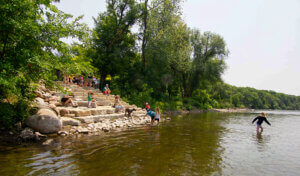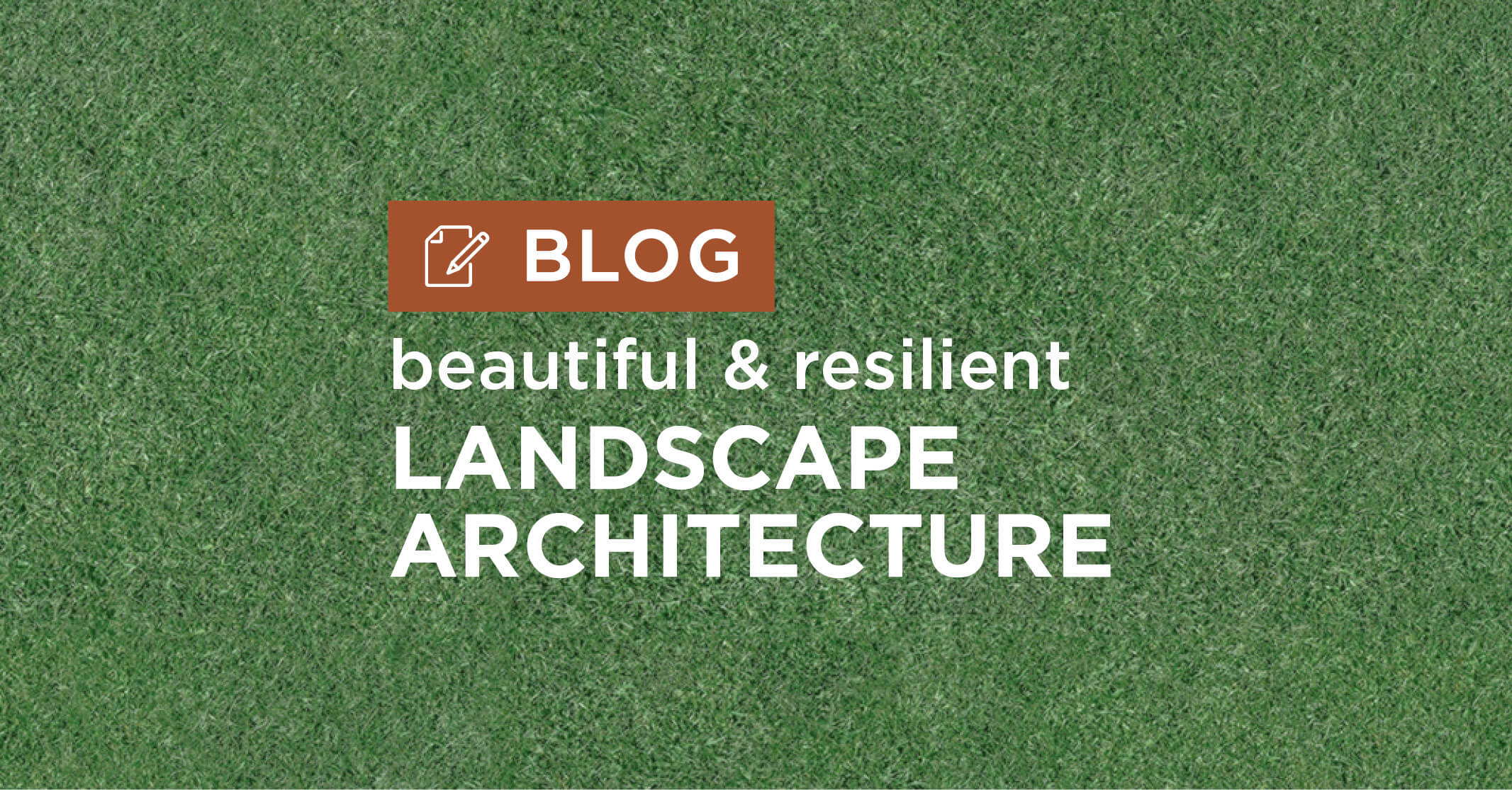Landscape Architecture Integrates Man-Made & Natural Environments
From parks and streetscapes to educational campuses and commercial developments, landscape architecture surrounds us — integrating the built world into the natural environment. This design discipline helps create unique and inviting spaces with notable benefits, including increased aesthetic appeal, stormwater management, and reduced energy costs. As we struggle to overcome some of the most significant 21st-century challenges, the landscape architecture profession is poised to provide sustainable environmental solutions. “As landscape architects, we influence the outdoor environment through design to enhance community quality of life. This influence can be seen in parks, streetscapes, site developments, and public spaces. At Snyder & Associates, we work with communities and other professionals to create unique projects and outdoor spaces for generations to enjoy,” explains Tim West, PLA, LEED AP, Development Business Unit Leader.
Raising Awareness of the Landscape Architecture Profession
To celebrate and raise awareness of the landscape architecture profession, we asked several seasoned members of our landscape architecture team to reflect on their career experiences, what inspires them, and the unique challenges they’ve faced designing original and Earth-friendly projects.
How would you describe landscape architecture’s role in the world around us?

I believe the most critical role of landscape architecture is to protect and enhance the aesthetic environment of our outdoor world. — Tim West, PLA, LEED AP, Development Business Unit Leader

We design spaces that influence how people experience places. Whether it’s a downtown streetscape or a median treatment in a suburban area, landscape architecture permeates these spaces to create unique user experiences. — Clay Schneckloth, PLA, Landscape Architect

Look around, and you will see the impact of the landscape architecture profession. Whether you’ve walked on a trail or attended a concert in a downtown plaza, chances are a landscape architect played a role in making that area a reality. That is what makes the profession so crucial to society. — Monte Appelgate, PLA, Senior Project Manager
What is satisfying about being a landscape architect?
I like seeing a project start from an idea and grow into real space. It’s tremendously satisfying to see a space used how you designed it to be after it’s built. — Tim West, PLA, LEED AP, Development Business Unit Leader
I am working with great people. Whether it’s a client, community leader, or coworker, the people make all projects worthwhile. — Monte Appelgate, PLA, Senior Project Manager
What challenges do landscape architects face?
We’re sometimes faced with short deadlines that can be challenging to meet. These challenges, however, tend to bring out the best in our design team — with team members stepping up to get

The new Hubbard Park canoe and kayak launch has been a huge success with park visitors.
things done. — Clay Schneckloth, PLA, Landscape Architect
Working with new clients, whether they are developers or the community. Understanding their needs, goals, limitations, and how to achieve a successful project. — Monte Appelgate, PLA, Senior Project Manager
What inspires you about the landscape architecture profession?
I enjoy working on projects with teams of different designers and professionals. These teams can challenge you to think differently about your design perspective and how it may be used or an alternative way it can be constructed. I feel like this pushes you to do better in your design work. — Tim West, PLA, LEED AP, Development Business Unit Leader

Old-world paver sidewalks add to the charm of the downtown district of Cedar Falls.
What is one landscape architecture project that you’re proud of and why?
I am incredibly proud of the Terry Trueblood Recreation Area in Iowa City. We overcame unique challenges and included cool features that turned the park into a true community destination. — Clay Schneckloth, PLA, Landscape Architect
What excites you about the future of landscape architecture?
Landscape architects must lead more design teams to minimize environmental impacts and create more efficient outdoor improvements as the world’s resources and open spaces get smaller. This will lead to more interest in environmental stewardship and more responsibility in project design. — Tim West, PLA, LEED AP, Development Business Unit Leader
We are seeing more young people getting involved in the profession. Also, there is increased respect from clients, city officials, and other design professionals for what landscape architects and their skill sets can bring to our built environment. — Monte Appelgate, PLA, Senior Project Manager

The Gypsum City campground currently accommodates 33 sites, with plans for more.
What wisdom would you share with someone just entering the landscape architecture profession or interested in pursuing it?
Get out and explore the world around you to experience the environment first-hand. It may seem obvious, but visit your project sites before you start designing them. Often, the natural world will help determine the best design. — Tim West, PLA, LEED AP, Development Business Unit Leader
There is a wide variety of directions an individual can pursue with landscape architecture. I would suggest starting your career with an internship to explore the possibilities the profession offers. This will help you determine the areas you enjoy and are intrigued by the most. Another recommendation is to consider a design-build position if you are considering working for a design firm. They offer great opportunities for hands-on experience in the field. Understanding how things get built is invaluable knowledge, as it will make you a respected resource. — Clay Schneckloth, PLA, Landscape Architect
Keep an open mind when deciding your path in the profession. There are many avenues to pursue, whether in the public or private sector or within the educational field. Find what inspires you, and go for it. — Monte Appelgate, PLA, Senior Project Manager
